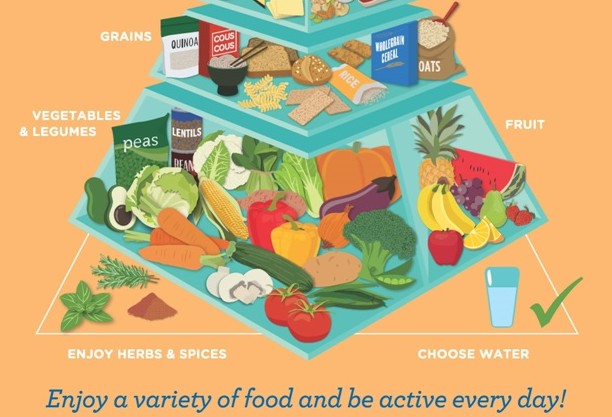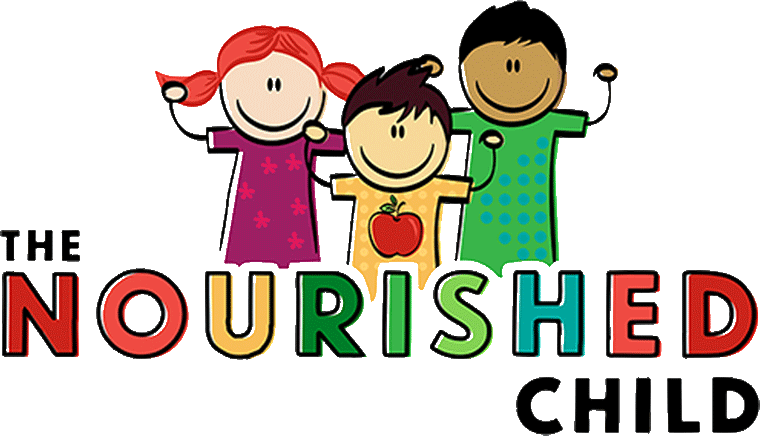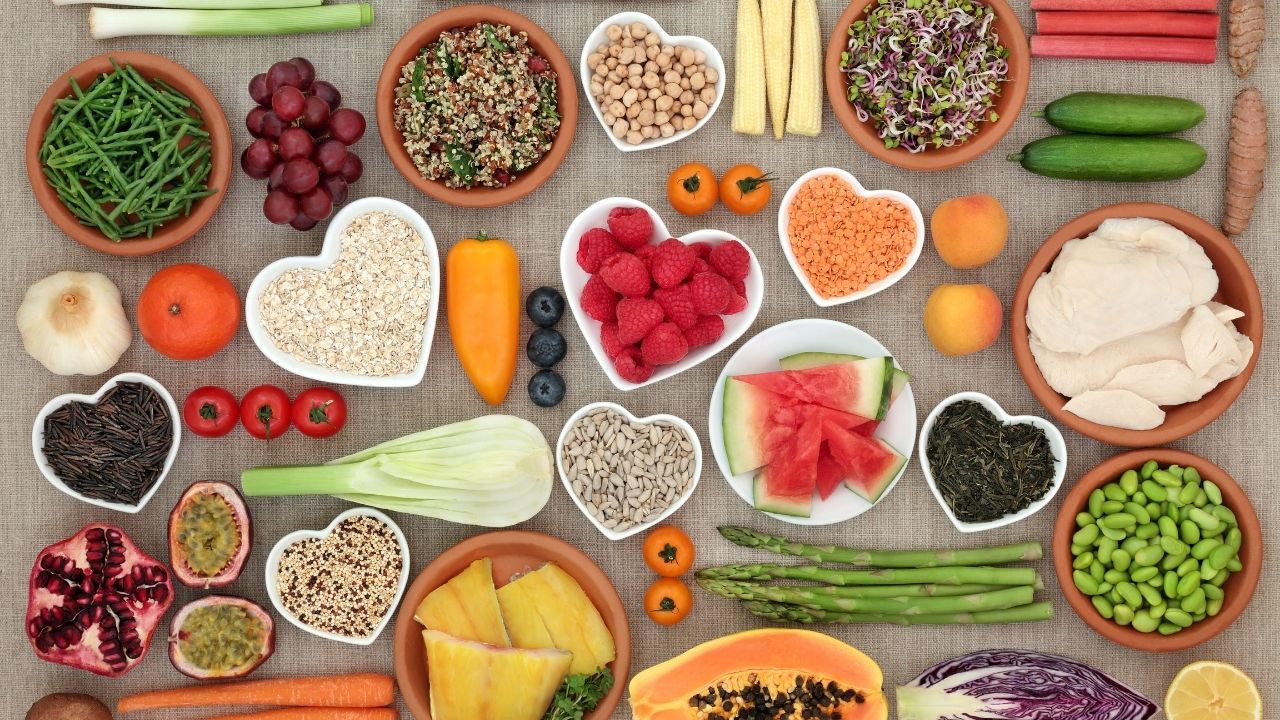
Achieving a healthy lifestyle starts at an early age. As children grow up, they learn the importance of healthy eating habits and how to exercise. Although it can be hard to maintain a balanced diet many studies have shown that well-rounded eating habits include all of the essential food groups. This means eating lots of fruits, vegetables, whole grains, as well as proteins. Keeping a healthy weight and a regular exercise routine are key components of a healthy lifestyle.
Healthy Lifestyles was developed by people with disabilities. As more people become healthier, the holistic approach to healthcare has been evolving. A Health Life Curriculum and Leader's Guide are included in the workshop to assist participants in living a healthy lifestyle. The workshop includes six follow up meetings, where participants can discuss their personal goals, share strategies and successes, as well as learn how to maintain and eat a healthy diet.

The program includes three components: advocacy, education, clinical care. The first phase requires teachers to attend a Lead Healthy Lifestyles Leader certification training workshop. Training includes a simulation workshop. The workshop allows trainees to have first-hand experiences with the philosophy and the curriculum. To learn more about Healthy Lifestyles, the second phase of the Leadership Training program is offered to the leaders.
The programme is a multi-phased programme that spans three school terms and focuses on delivering a general message about a healthy lifestyle. It encourages physical activity as well as energy balance. This phase aims to build relationships and promote awareness of the programme among children. Children are encouraged to incorporate Healthy Lifestyles into their everyday lives in the final phase. There are many aspects to a healthy lifestyle. It is worth making a plan.
The second phase is the Creating a Supportive Environment. This phase will raise awareness and build relationships between parents and children about HeLP. The school hosts workshops and professional dancers as well as sportspeople who talk to children about healthy living habits and offer practical advice. They are role models and can change the school culture. A healthy life starts with a healthy diet and physical activity. A healthy lifestyle can help you improve your health.

Lifestyle changes are important to a healthy lifestyle. Healthy eating habits and regular exercise are important components of a healthy lifestyle. A variety of healthy foods is the first step to a healthy nutrition plan. Foods rich in vitamins or minerals can be eaten. Healthy food will make your body work better. Furthermore, you can consume less fatty food.
FAQ
Which workout is best to build muscle?
When you are building muscle mass, there are two main exercises you need to do. These are the isolation exercises as well as compound movements. While isolating exercises target specific muscles, compound movements are designed to focus on multiple muscle groups at once.
The best way to improve your workouts is to choose exercises that challenge all your major muscle groups. This will ensure that you work hard every session.
An app called MyFitnessPal allows you to keep track of everything. It can track everything from calories burnt to weight lifting. You can also create customized meal plans based upon your goals.
Does weightlifting burn more fat than other forms of exercise?
Weight lifting does burn fat faster, but only if you combine it with cardio workouts.
It is important to do weightlifting right after cardio exercise in order to reap the full benefits.
If done correctly weightlifting can raise your heart rate, oxygen consumption and help you lose weight.
If you don't mix it with cardio, your body won't notice significant changes.
What is a good exercise routine?
To stay fit, you need to exercise regularly. You don't have to do the same type of exercise every day, it doesn't really matter. The key thing is consistency. For you to get results, you have to stick with it for a longer period of time.
Begin by walking for a few minutes each day. Start by walking for a few minutes every day. Gradually increase your time exercising to 30 minutes per week. You could do this by running, swimming, weight training or yoga.
It's important that you get your exercise done every day. Don't skip any sessions unless you have a valid reason for not attending.
When exercising outside, make sure you have the right clothing and shoes. It is important to take into account the weather conditions, and how they may affect your ability to exercise safely.
When you exercise, make sure you are drinking plenty of water. Avoid alcohol consumption during this time as it can lead to dehydration. Also, avoid caffeinated drinks such as coffee, tea, and cola. These drinks may give you energy but also dehydrate your body.
At first, it's normal to feel tired after you finish your exercise routine. If you stick with your training program, you'll feel more awake and alert.
Is Cardio Better Than Strength Training?
Both are equally excellent. For those who want to gain muscle quicker, cardio is a better choice.
Cardio burns more calories in a minute than strength training and more fat.
Strength training helps build muscle mass. But it takes longer than cardio to accomplish this goal.
Can I go to a gym 7 days per week?
Yes, you can go to a gym seven days per week. But not all at once. This means you need to choose a time when you feel rested and not too tired.
This will help keep you motivated and give you energy for other activities.
Also, ensure you eat healthy during these times. This will make it so you don't feel tired or sluggish while going to the gym.
And lastly, you need to ensure that there isn't anything else competing for your time. You might want to avoid working out on school nights if you have kids. They can distract you from your exercise routine.
Is it true, that too much protein can cause kidney stones?
Protein is essential for healthy bones and tissue. Over-consuming protein can result in calcium being excreted through the kidneys. This can lead to kidney stones.
It is important that you note that not all people develop kidney stones when they consume more than 2 grams of protein per kg (2.2 pounds). It is possible to eat high levels of protein without developing kidney stones.
Watching your sodium intake can help prevent kidney stones. Sodium regulates the body's water balance. Too much sodium can lead to kidney stones.
If you have kidney stones, you can reduce your intake of protein. About half of adults' daily caloric intake is made up of protein. It is possible to lose weight by cutting down on your intake of proteins.
If you do decide to eat more protein, don't go overboard. Aim for less than 20% of total calories from protein.
Statistics
- Candidates and applicants must pass all four tests at 70% (minimum level) to graduate from Basic Deputy U.S. Marshal (BDUSM) Training. (usmarshals.gov)
- The PRS enabled risk stratification for overall prostate cancer and lethal disease with a four-fold difference between men in the highest and lowest quartiles (HR, 4.32; 95% confidence interval [CI], 3.16-5.89). (pubmed.ncbi.nlm.nih.gov)
- By John Thompson Take a whopping 38% off a set of PowerBlock Pros. (menshealth.com)
- An estimated calorie range for moderately active adult males falls between 2,200 to 2,800 calories per day, depending on age. (eatright.org)
- Are You One of the 20% of Guys (mh.co.za)
External Links
How To
How can I exercise to burn fat?
Exercise burns calories by increasing metabolism and oxygen consumption.
Moderate intensity exercise is a safe way to lose weight.
To burn fat while exercising, follow these tips:
-
Do cardio exercises such as walking, swimming, jogging, cycling, running, or elliptical training.
-
Do 30 minutes of exercise three times a week.
-
You can lose weight by adding strength training to the routine.
-
Avoid intense training. You can build muscle and not break down muscle tissue.
-
When exercising, make sure to drink lots of water. Water flushes out toxins, and keeps your body properly hydrated.
-
Choose low-fat protein shakes after working out. Protein shakes are great for your muscles and energy.
-
You can eat smaller meals throughout the day so that you don't feel hungry in between meals.
-
Don't skip breakfast! Skipping breakfast can cause you to feel tired and sluggish.
-
Mental health is important. Stressful situations can slow your metabolism.
-
Keep a positive attitude. Studies show that people who believe they are overweight gain more weight then those who think they are attractive.
-
Get enough rest. You will have a harder time losing weight if you do not get enough sleep.
-
Keep active. Make sure you get up and move every hour.
-
Maintain a healthy diet. A healthy diet will help you feel fuller for longer.
-
Relaxation is possible by finding ways to relax. Tenseness can cause stress hormones to break down muscle tissue.
A balanced diet provides all the nutrients necessary for growth and development.
Six small meals per day is better than three large meals. This gives your body time and energy to process the food.
Calcium is required to support strong bones. Calcium is found in dairy products like yogurt, fortified milk beverages, orange juices, cereals and bread.
Calcium is found in leafy vegetables, beans and tofu, as well nuts, seeds and cheese.
Your body needs vitamin D to absorb calcium. Vitamin D is found in eggs yolk, fatty fish and fortified foods.
Vitamin E plays an important role in skin health. Vitamin E can be found in vegetable oils as well as wheat germ oil, peanuts and almonds.
Your body requires zinc for normal immune function and wound healing. Zinc can be found in seafood, legumes and meats.
Zinc deficiency can cause fatigue and loss of appetite. It can also lead to depression and impaired immunity.
Too much sugar leads to insulin resistance. This results in higher blood glucose levels. Insulin resistance leads directly to weight gain.
Insulin resistance occurs when the bloodstream is full of free radicals. Free radicals are molecules that have unpaired electrons, which can cause damage to cell membranes or other parts of your body.
Most free radicals come from pesticides herbicides, food additives, preservatives smoking, radiation, chemical in cosmetics, lotions and household cleaning supplies.
Free radical damage can cause cancer, heart disease and diabetes, as well as arthritis, asthma, and other diseases.
To prevent free radical damage, eat a healthy diet rich in antioxidants. Antioxidants protect against oxidative damage.
Vitamin C (found on citrus fruits), Beta carotene, found in carrots and sweet potatoes, spinach and broccoli, cantaloupe (found in tomatoes, mangoes and peppers), and Vitamin E (found nuts, olive oil and avocados).
Other antioxidant nutrients include selenium, copper, manganese, and zinc.
Selenium helps to protect cells against free radicals and oxidative stress. Selenium can also be found in Brazil nuts (tuna), liver, kidneys and shrimp.
Copper protects your eyes, brain, eyes and red blood cell. Copper is also found in poultry, meat, and organs.
Manganese forms an essential part of bone structure. Manganese is found in brown rice, spinach, bananas, prunes, raisins, oatmeal, and lentils.
Zinc is important for healthy growth, reproduction, and wound-healing. Zn is found in lean cuts of meat, white fish, poultry, and eggs.